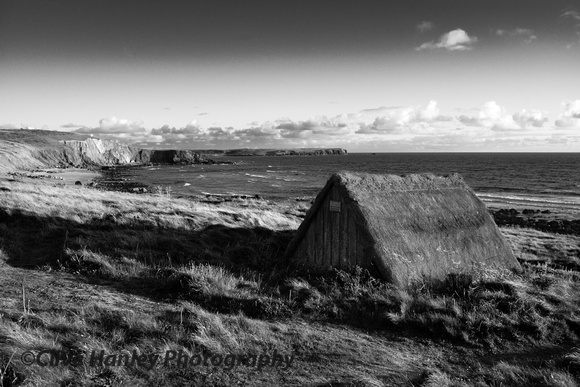Sea weed drying hut - Freshwater West Bay
There is a lot of history along the Pembrokeshire coast and Freshwater West beach was a significant site for the Laver Bread industry. A seaweed drying hut remains at the beach as an example of the type used at the time.
No one knows precisely when people in west Wales first started eating laver, some say it was first introduced as a survival food by the Vikings, but whether the locals turned to the nutritious snack out of necessity or delight we will never know.
Apparently the first written description of it appeared in William Camden’s Britannia – 1607, where it vividly describes the springtime gathering of “Lhawvan” from the beach of Eglwys Abernon near St David’s in Pembrokeshire: “Near St Davids, especially at Eglwys Abernon, and in many other places along the Pembrokeshire Coast, the peasantry gather in the Spring time a kind of Alga or seaweed, where they made a sort of food called lhavan or llawvan, in English, black butter. The seaweed is washed clean from the sand, and sweated between two tile stones. The weed is then shred small and well-kneaded, as they do dough for bread, and made up into great balls or rolls, which some eat raw, and others fry with oatmeal and butter”. A small cottage industry in collecting Laver slowly developed throughout Pembrokeshire between the 18th century to around the 1950s, the remnants of which can still be seen at Freshwater West where a laver seaweed drying hut has been restored. At one time up to 20 drying huts could be found along Freshwater West, each one maintained by a local family from Angle The weed was spread out in the thatched huts to dry and on Monday mornings was sacked and labelled. It was then collected by horse and cart to take it to Pembroke station and from there it went to dealers in Swansea where it was made into laver bread and sold in the markets.


